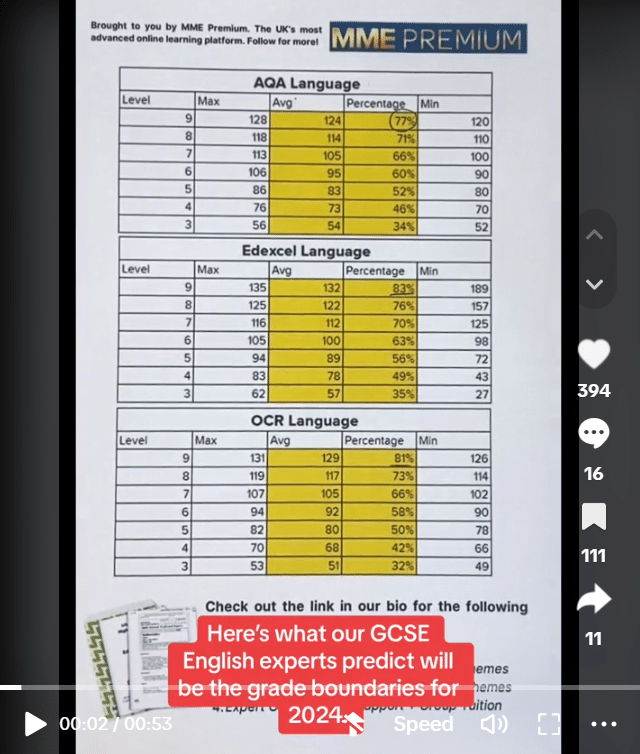Reading Fiction: Decoding the Texts
Reading Fiction: Decoding the Texts Revision
Decoding the Texts
Texts can be complicated at first, so it helps to know how to read them so that you can find their meaning, and effectively answer the questions on your exam paper.
This page will inform you on how to decode texts by identifying their intended audience and purpose, as well as the point of view, line of argument and type of text they are.
Audience
The audience of your text is simply the person or group of people who will read the text.
Format, tone and the information given within a text can give you an idea of who the audience is meant to be.
The audience will affect the way a text is written, and influence the language used within.
As a result, this will help you find the meaning of a text more easily.
When reading a text, consider the context and background, then work out who it is aimed at:
- Does it use a chatty style, indicated through informal language like colloquialisms?
- Does it use simple sentences to convey information?
- Is there a theme to the content that might suggest it will interest a certain group of people?
You can also gather the intended audience through the use of structure.
For example:
- Paragraphs
- Pace
- Sentence structure
- Order of events
These structural factors are all important when considering audience.
Purpose
The purpose of the text is the reason it is written. It’s important we know this to improve the quality of your answers.
It falls under the finding implicit information part of AO1, and shows the examiner you have a cohesive understanding of how and why texts are written in specific ways.
How to we figure out the purpose of a text?
Well, a good place to start is having a look for key structural features that might give you some clues.
For example, short sentences may be used to build tension in the text, showing you that the purpose is to entertain the reader.
Language features can also be analysed to work out the purpose of the text.
For example, informal language like colloquialisms and slang might be used, which may suggest the purpose of the text is to persuade by creating a sense of conversation or closeness with the reader.

You should read the whole text to get a general overview on whether or not the text is biased.
Bias is the disproportionate weighting either in favour of or against an idea within a text.
It can be seen in language features, like the use of opinions within the text, or the author might even leave out key details of the plot to encourage the reader to side with a particular character.
Bias can also reveal the purpose of a text, for example to persuade the reader of a political or social viewpoint through fiction.
When writing your answer remember to include evidence from the source to back up your points about purpose or bias.
Short, concise quotes from the source that clearly relate to what you’re talking about are important in the exam!
Point of View and Line of Argument
Think of point of view as the eyes that you read the text with…the point of view is the perspective of the text, who it comes from (the author), and what their motivations are.
Line of argument naturally follows this, it is how the writer’s argument is put across.
How do we find the Point of View and Line of Argument in a Text?
Looking at the language can be a good way to work out the point of view.
You should think about whether the language is...
Persuasive? Informative? Casual? Biased?
You can also look at the perspective that the text is written in to better understand the point of view:
Is first person perspective, so ‘I’, ‘Me’ for example, used?
Why do you think the author has chosen this? To create a conversational tone with the reader?
Is second person perspective used instead, like ‘you’ or ‘yourself’?
Why do you think the author has chosen this? Does it add to a persuasive tone overall?
Is third person perspective used instead, like ‘she’, ‘they’ or ‘he’?
Why do you think the author has chosen this? Is this part of a more descriptive tone?
What structural elements are in place to help you find the line of argument? Are there short or long paragraphs?
Looking at the content of the text is key here. Take a look at how the paragraphs of the source begin, the argument is often laid out in the opening sentence of each one.
Next, read through the text carefully and evaluate any evidence or explanation the author may have given to strengthen their argument.
In fiction texts, it is less likely that you will find a strong argument or critical opinion stated in the text.
However, you could use these methods for characters within the text to better understand their line of argument and add to your analysis in your answer!
Non Fiction vs Fiction

Non-fiction is based on fact and real-life events, like a newspaper article or autobiography.
In non-fiction texts, there are still language and structural features to spot, like a formal tone in a letter or paragraphs in a newspaper.
For example, the aim of non-fiction texts can be to instruct and inform.
Some authors might write with a bias or hidden purpose, so it’s important to work it out early on as it will help you gain a better understanding of the underlying meaning.

Fiction is a made-up text, like a poem or a story.
In fiction texts, plenty of imaginative and creative language and structure use is employed for effect.
The aim of fiction texts can be to entertain and describe for example.
Some authors might be writing from a political stand point, or only showing one perspective in their story, so it’s important to consider their purpose when reading.
Why are each of them tested?
These are tested to see whether you can distinguish between different types of text, and whether you are able to analyse each one appropriately in your own responses.



